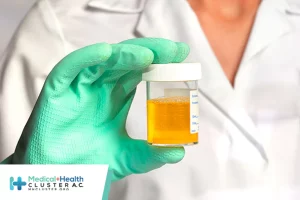CONDENA MH CLÚSTER ATAQUE ARMADO A HOSPITAL ARCÁNGELES
Leer más
Vaccination Schedule and Dosing Regimens for JYNNEOS Vaccine

JYNNEOS vaccine is licensed as a series of two doses administered 28 days (4 weeks) apart.
The standard regimen involves a subcutaneous (Subcut) route of administration with an injection volume of 0.5mL. The standard regimen is the FDA-approved dosing regimen. Since August 9, 2022, the standard regimen has been authorized for people aged <18 years under an Emergency Use Authorization.
In the context of the current national Public Health Emergency (PHE), an alternative regimen may be used for people age ≥18 years under an Emergency Use Authorization beginning August 9, 2022. The authorized alternative regimen involves an intradermal (ID) route of administration with an injection volume of 0.1mL. This approach could increase the number of available JYNNEOS vaccine doses by up to five-fold. Results from a clinical study showed that the lower intradermal dose was immunologically non-inferior to the standard subcutaneous dose (Frey SE et al, Vaccine, 2015; 33(39):5225-5234).
| JYNNEOS vaccine regimen | Route of administration | Injection volume | Recommended number of doses | Recommended interval between 1st and 2nd dose |
|---|---|---|---|---|
| Alternative regimen | ||||
| People age ≥18 years | ID | 0.1 mL | 2 | 28 days |
| Standard regimen | ||||
| People age <18 years | Subcut | 0.5 mL | 2 | 28 days |
| People of any age who have a history of developing keloid scars | Subcut | 0.5 mL | 2 | 28 days |
Every year, unsafe injection practices by U.S. healthcare providers—like syringe reuse and misuse of medications vials—can cause outbreaks. It is the responsibility of every provider who prepares and administers injections, or supervises those that prepare and administer injections, to make sure that patients receive the correct medication and are not exposed to life-threatening infections. Providers should adhere to Standard Precautions and the principles of Safe Injection Practices, including the use of a sterile, single-use, disposable needle and syringe for each injection given, and prevention of contamination of injection equipment and medication.
See the following resources for further information, including on how to safely store, prepare, and administer vaccines:
- ACIP’s general best practicesand Epidemiology and Prevention of Vaccine-Preventable Diseases (CDC Pink Book) and
- CDC’s Vaccine Administration Tools and
- CDC’s One and Only Campaign and FAQs regarding safe injection practices like preparation, administration, and handling of single-dose vials.
For further instructions on use of JYNNEOS monkeypox vaccine, refer the provider agreement for the HHS Monkeypox Vaccination Program.
Duration of Immunity
Peak immunity is expected to be reached 14 days after the second dose of JYNNEOS vaccine. The duration of immunity after two doses of JYNNEOS is unknown.
Dosing Intervals
Recommended interval: The second dose of JYNNEOS vaccine should be given 28 days after the first dose. Based on available clinical study data [13 MB, 93 pages], the second dose may be given up to 7 days later than the minimum interval of 28 days (i.e., up to 35 days after the first dose).
Minimum interval: The vaccine manufacturer advises against giving the second dose before the minimum interval of 28 days. However, based on ACIP’s general best practices, a dose may be administered up to 4 days before the minimum interval of 28 days (known as the “grace period,” which would be a minimum of 24 days after the first dose). Vaccine doses should not be administered before the minimum interval. Nevertheless, if the second dose is inadvertently administered before the minimum interval, the dose may not need to be repeated. Please refer to “Table 7. Vaccine Administration Errors and Deviations.”
Maximum interval: If the second dose is not administered during the recommended interval, it should be administered as soon as possible based on ACIP’s general best practices. There is no need to restart or add doses to the series if there is an extended interval between doses.
Evidence Quality
JYNNEOS is approved for the prevention of monkeypox disease in individuals 18 years of age and older at high risk for monkeypox infection. Licensure was supported by animal studies as well as clinical studies demonstrating a comparable immune response to ACAM2000 (Rao AK et al, MMWR, 2022; 71(22):734-742). No immune correlate of protection (i.e., minimum threshold level of antibodies needed to prevent symptoms) has been established. One peer-reviewed study of 524 randomized subjects found that immunogenicity was non-inferior following the alternative regimen versus the standard regimen (Frey SE et al, Vaccine, 2015; 33(39):5225-5234). This study supported the authorization of the alternative dosing regimen for people 18 years of age and older. The evidence to support the authorized use of JYNNEOS by the subcutaneous route to individuals younger than 18 years of age is based on the data which supported the approved use of JYNNEOS and historical data on the use of smallpox vaccine in the pediatric population. Immunogenicity of JYNNEOS has been studied among people with HIV infection (Overton ET et al, Open Forum Infect Dis, 2015 Apr; 2(2):ofv040). Studies of intradermal administration of influenza vaccines among people with HIV infection suggest similar immunogenicity compared with other routes of administration (Garg S et al, Clin Infect Dis. 2016; 62(3):383-391). No data are currently available on intradermal administration of JYNNEOS for people with severe immunosuppression (Altered Immunocompetence Guidelines for Immunizations from ACIP). The risk for serious adverse events after either the standard regimen or the alternative regimen is expected to be low. Review of previous Vaccine Adverse Event Reporting System (VAERS) reports from influenza vaccine products that were administered intradermally identified no new or unexpected safety concerns, and injection-site reactions were the most commonly reported adverse events. The alternative regimen is likely to be acceptable and feasible. No data are available on cost-effectiveness, values, or health equity. Level of certainty for the evidence for public health benefits is considered low, but desirable consequences probably outweigh undesirable consequences in most settings. The balance of consequences favors the intervention in the context of a current public health emergency. These interim clinical considerations may change as additional evidence is considered.
Administration
Intradermal (ID)
Intradermal administration involves injecting the vaccine superficially between the epidermis and the hypodermis layers of the skin, typically of the volar aspect (inner side) of the forearm. This should produce a noticeable pale elevation of the skin (wheal). Please refer to related resources, including intradermal administration teaching tools and the Preparation & Administration Summary for the General Population for further details on intradermal vaccine administration.
A person who presents for their second JYNNEOS vaccine dose who is still experiencing erythema or induration at the site of intradermal administration of the first vaccine dose (e.g., the forearm) may have the second dose administered intradermally in the contralateral forearm.
https://www.cdc.gov/poxvirus/monkeypox/interim-considerations/jynneos-vaccine.html
Créditos: Comité científico Covid




